



























































Partner Street Paper, The Conversation, takes a look at how India, the world’s largest democracy, casts its ballots.































































Partner Street Paper, The Conversation, takes a look at how India, the world’s largest democracy, casts its ballots.



We put the spotlight on Nashville nonprofit Urban Green Lab, which teaches communities how to live sustainably.

For Pride Month, PBS spotlights the secret history of the Lavender Scare, a purge of gay employees of the federal government. in the 1950s.


Our vendors write in this issue about bus drivers, Keith Urban, former band mates, time, and newly homeless neighbors.
Contributor Board
Cathy Jennings, Chair Tom Wills, Bruce Doeg, Demetria Kalodimos, Ann Bourland
Amanda Haggard • Linda Bailey • Tom Wills • Bailey Basham • Ridley Wills II • Joe Nolan • Harold B. • Jackie S. • David F. • David "Clinecasso" C. • Mary B. • Julie B. • William B. • Mr. Mysterio • Cynthia P. • Vicky B. • Poorvi Vora




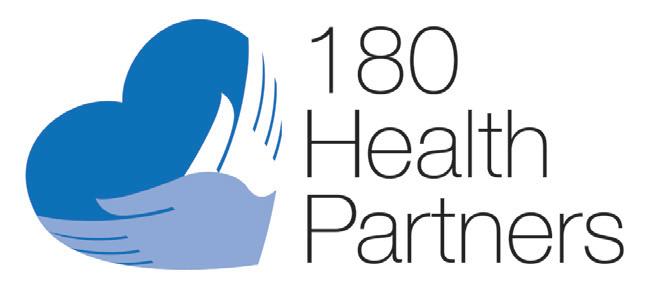

Cathy Jennings • Tom Wills • Joe First
• Andy Shapiro • Michael Reilly • Ann Bourland • Patti George • Linda Miller •
Deborah Narrigan • John Jennings • Barbara Womack • Colleen Kelly • Janet Kerwood • Logan Ebel • Christing Doeg • Laura Birdsall
• Nancy Kirkland • Mary Smith • Andrew Smith • Ellen Fletcher • Anna Katherine Hollingsworth • Michael Chavarria
Will Connelly, Tasha F. Lemley, Steven Samra, and Tom WIlls Contributor
Editorials and features in The Contributor are the perspectives of the authors. Submissions of news, opinion, fiction, art and poetry are welcomed. The Contributor reserves the right to edit any submissions. The Contributor cannot and will not endorse any political candidate.

Submissions may be emailed to: editorial@thecontributor.org
Requests to volunteer, donate, or purchase subscriptions can be emailed to: info@thecontributor.org Please email advertising requests to: advertising@thecontributor.org







Mailng Address
The Contributor P.O. Box 332023, Nashville, TN 37203
Editor’s Office: 615.499.6826 Vendor Office: 615.829.6829


Proud Member of:




Printed at:

Follow The Contributor:
Copyright © 2018 The Contributor, Inc. All rights reserved.

 BY TOM WILLS, CO-FOUNDER
BY TOM WILLS, CO-FOUNDER
The paper you just paid for was bought by someone else first, otherwise it wouldn’t exist. That’s how The Contributor works. A vendor who experienced homelessness paid 50 cents for this paper and then sold it to you. By buying it and taking it with you, you’ve just encouraged that vendor to buy another. BOOM! That’s the solution. Now keep reading. This paper has something to say to you.


Street papers provide income for the homeless and initiate a conversation about homelessness and poverty. In 2007, The Contributor founders met at the Nashville Public Library downtown to form one. In a strike of lightning we named it The Contributor to infer that our vendors were “contributors to society,” while their customers could contribute to their work. But, thunder from lighting is always delayed …
It took three years, but Nashville embraced us like no other city in the world. The Contributor became the largest selling street paper per-capita on the globe. And today 50 percent of our six months or longer tenured vendors have found housing. BOOM! The thunder has struck.

The Contributor is a different kind of nonprofit social enterprise. We don’t serve meals or provide emergency shelter. We don’t hire people in poverty to create products or provide a service. Rather, we sell newspapers to homeless people who work for themselves. We train them to sell those papers to you, keep the money they earn, and buy more when they need to replace their stock.
Our biggest fans don’t always get this. Like lightning without the thunder, they see the humanity of the vendor but misunderstand the model. Case in point: In 2013 during a funding crunch, a representative of one of Nashville’s biggest foundations exclaimed, “I’m such a big fan that I never take the paper!” We responded, “Well, that’s why we are in a funding crunch.” BOOM! Thunder was heard. Taking the paper makes our model work — not taking it breaks it. And selling the paper twice doesn’t just fund the paper, it funds housing and change. BOOM! Our vendors report their sales to qualify for subsidized housing and even for standard housing deposits and mortgages. They don’t consider your buying the paper a “donation.” It is a sale. When they sell out, they buy more and build the paper trail of a profitable business. Until making these sales, many of our vendors had never experienced the satisfaction of seeing their investment pay off. And when it does, it liberates! They have become “contributors” to their own destiny. And Nashville has become a city of lightning and thunder. BOOM! Now that you are a SUPPORTER , become an ADVOCATE or a MULTIPLIER You are already a SUPPORTER because you know that taking the paper makes the model work. You bought the paper and you are reading it. Now your vendor is one copy closer to selling out, which is exciting! Now you can become an ADVOCATE when you introduce your friends to your favorite vendor, follow us and share our content on social media, contact us when you witness a vendor in distress or acting out of character, or explain why others should pick up a copy and always take the paper when they support a vendor. And, you can become a MULTIPLIER when you advocate for us AND directly donate to us or become an advertiser or sponsor of The Contributor. Our income stream is made of 50-cent- at-a-time purchases made from our vendors, matched by contributions, ad sales and sponsorships from multipliers like you. Because our vendors are business owners, your donations are seed-money investments in their businesses and multiply in their pockets. Every donated dollar multiplies four-to-seven times as profits in the pockets of our vendors. Thanks for contributing.
El periódico que usted acaba de pagar fue primeramente comprado por alguien mas, de otra manera no existiría. Así es como funciona The Contributor. Un vendedor que está sin hogar pagó 50 centavos por este periódico y después se lo vendió a usted. Al comprarlo y llevarlo con usted, usted animo a este vendedor a comprar otro. BOOM! Esa es la solución. Ahora continúe leyendo. Este periódico tiene algo que decirle. Los periódicos vendidos en la calle proveen ingresos para las personas sin hogar e inicia una conversación sobre lo que es la falta de vivienda y la pobreza. En el 2007, los fundadores de The Contributor se reunieron en una librería pública en Nashville para formar uno. Y como golpe de un rayo, le llamamos The Contributor para dar a entender que nuestros vendedores eran “contribuidores para la sociedad,” mientras que los consumidores podrían contribuir a su trabajo. Pero, el trueno siempre tarda más que el rayo. Nos llevó tres años, pero Nashville nos acogió como ninguna otra ciudad en el mundo. The Contributor se volvió uno de los periódicos de calle más vendido en el globo. Y hoy el 50 por ciento de nuestros seis meses o más de nuestros vendedores titulares han encontrado casa. BOOM! Ha llegado el trueno.
JENNINGSThe Contributor es una empresa social sin fines de lucro muy diferente. Nosotros no servimos comida or proveemos alojo de emergencia. No contratamos gente en pobreza para crear productos or proveer un servicio. En vez, nosotros vendemos periódicos a las personas sin hogar para que ellos trabajen por ellos mismos. Nosotros los entrenamos como vendedores, ellos se quedan el dinero que se ganan, y ellos pueden comprar más cuando necesiten reabastecer su inventario.
Nuestros mas grandes aficionados no entienden esto. Como un rayo sin trueno, ellos ven la humanidad de el vendedor pero no comprenden el modelo. Un ejemplo: En el 2013 durante un evento de recaudación de fondos, uno de los representantes de una de las fundaciones más grandes de Nashville, exclamó: “Soy un gran aficionado, y es por eso que nunca me llevo el periódico.” Al cual nosotros respondimos: “Y es por esa razón por la cual estamos recaudando fondos.” BOOM! Y se escuchó el trueno! El pagar por el periódico y llevárselo hace que nuestro sistema funcione, el no llevarse el periódico rompe nuestro sistema. Y el vender el papel dos veces no da fondos para el periódico, pero da fondos para casas y causa cambio. BOOM! Nuestros vendedores reportan sus ventas para calificar para alojamiento subvencionado y hasta para una casa regular, depósitos e hipotecas. Ellos no consideran el que usted compre el periódico como una “contribución” pero más lo consideran como una venta.
Cuando se les acaba, ellos compran mas y asi logran establecer un negocio rentable. Hasta que lograron hacer estas ventas, muchos de nuestros vendedores nunca habían experimentado el placer de ver una inversión generar ganancias. Y cuando logran hacer esto, da un sentido de Liberación! Ellos se han vuelto contribuidores de su propio destino, y Nashville la ciudad de el trueno y el rayo. BOOM!
Ahora que te has vuelto nuestro SEGUIDOR, vuelve te en un ABOGADO o un MULTIPLICADOR. Ya eres nuestro SEGUIDOR, porque sabes que al llevarte este periódico sabes que esto hace que nuestro modelo funcione. Compraste el papel y lo estas leyendo. Ahora nuestro vendedor está a una copia más cerca de venderlos todos. Que emoción!
Ahora que te has vuelto nuestro ABOGADO cuando presentes a tus amigos a tu vendedor favorito, siguenos y comparte nuestro contenido en social media, contactanos cuando seas testigo de un vendedor actuando de manera extraña o fuera de carácter. O explicale a tus amigos porque ellos deben de llevarse el periódico cuando ayuden a un vendedor.
Te puedes volver un MULTIPLICADOR cuando abogues por nosotros, Y directamente dones a nosotros o te vuelvas un anunciador o patrocinador de The Contributor. Nuestra fuente de ingresos consiste en ventas de 50 centavos hechas por nuestros vendedores, igualadas por contribuciones, venta de anuncios, y patrocinios de multiplicadores como usted. Porque nuestros vendedores son dueños de negocios, las donaciones que den son dinero que es invertido y multiplicado en sus bolsas. Cada dólar donado se multiplica de cuatro a siete veces en la bolsa de nuestros vendedores. Gracias por Contribuir.

Democracy is increasingly threatened — from gerrymandering, from dishonest campaigning, from social media manipulation, from remote hacking and from foreign interference. India is the world’s largest democracy — 600 million of its citizens were expected to cast votes in the most recent election. Poorvi Vora, a professor at George Washington University, who has dedicated 15 years working on the security of electronic voting machines, goes into detail about how the country pulls off its elections and the increasing threats to its sovereignty.
BY POORVI VORAAbout 600 million Indian citizens were expected to cast their votes over a period totalling 39 days in the most recent election for their country’s parliament. There are roughly 900 million eligible voters, and the country has typically seen about two-thirds of them turn out to polling places.

I have been working on the security of electronic voting systems for more than 15 years, and, along with other colleagues, have been interested in understanding how a nation can tally that many votes cast over such a long period. India uses a domestically designed and manufactured electronic voting machine — as many as 4 million of them at 1 million polling places, at least some in extremely remote locations.
The first version of the Indian electronic voting machine debuted in the state election in Kerala in 1982. Now they’re used in elections throughout the country, which happen on different days in different areas.
When a voter arrives at the polling place, she presents a photo ID and the poll officer checks that she is on the electoral roll. When it’s her turn to vote, a polling official uses an electronic voting machine’s control unit to unlock its balloting unit, ready to accept her vote.
The balloting unit has a very simple user interface: a series of buttons with candidate names and symbols. To vote, the voter simply presses the button next to the candidate of her choice.
After each button press, a printer prints out the voter’s choice on paper and displays it to the voter for a few seconds, so the person may verify that the vote was recorded correctly. Then
the paper is dropped into a locked storage box.
The whole system runs on a battery, so it does not need to be plugged in.
When it’s time for the polling place to close at the end of the voting day, each electronic voting machine device and paper-record storage box is sealed with wax and tape bearing the signatures of representatives of the various candidates in that election, and stored under armed guard.
After the election period is over and it’s time to tally the votes, the electronic voting machines are brought out, the seals opened and the vote counts for each control unit are read out from its display board. Election workers hand-tally these individual machine totals to obtain the election results for each constituency.
The Indian electronic voting machine primarily runs on specialized hardware and firmware, unlike the voting machines used in the U.S., which are software-intensive. It is intended for the single purpose of voting and specially designed for that, rather than relying on a standard operating system like Windows, which needs to be regularly updated to patch detected security vulnerabilities.
Each machine requires only a connection between a balloting unit and a control unit; there are no provisions to connect an electronic voting machine to a computer network, much less the internet — including wirelessly.
This design does offer some protections against possible tampering with how votes are recorded and tallied. The Election Commission of India has repeatedly claimed that the electronic voting machines are tamper-proof.
However, a scholarly study has demonstrated there are ways to rig the machines. In particular, the simplicity of the design allows for simple attacks, such as intercepting and modifying the signal carried over the machine’s cable.
The Election Commission has not made public any independent security evaluations, so it’s unclear exactly what is — or isn’t — possible. Parties that lose elections often suspect malfeasance and question the equipment.
As I and others have observed, when the machines are being made, there are a number of opportunities for someone to physically tamper with an electronic voting machine in ways that pre-election device testing might not detect. The machines’ software is designed, written and tested at two electronics companies owned by the government of India: Bharat Electronics Limited and Electronics Corporation of India Limited. The chips for the machines are manufactured outside India. In earlier versions of the machine, the chip manufacturer also wrote the machine code into the chip; today the electronics companies do it themselves.
At any time during manufacture, testing and maintenance, it may be possible to introduce counterfeit chips or swap out other components that could let hackers alter the results.
The Election Commission of India argues that any manipulation or error would be detected because the electronic voting machine is tested frequently and candidate representatives have opportunities to participate in mock elections immediately before a machine is used in a real elec-
tion. However, it is possible to make changes that will not be detected. Testing can reveal only some problems, and the absence of problems during testing does not mean that problems do not exist.
There is, however, a mechanism for detecting attacks — that printed-out paper bearing the vote and stored securely with the electronic equipment. A 2013 Supreme Court directive asked the Election Commission to create that process to protect the integrity of the balloting process.
In each constituency, five electronic voting machines will have their results audited by comparing a manual count of the printouts with the electronic tallies. (This means about one or two percent of each constituency’s machines will be tested.) Opposition parties have asked the Supreme Court to order audits of half of all electronic voting machines, but that may not happen with this year’s election.
While the electronic voting machine system is useful and functional, officials and observers shouldn’t assume there’s no way to tamper with the results. The Election Commission should certainly continue to improve testing and provide public reports of independent testing. However, because no technology can be tamper-proof, each election outcome should be verified by a manual audit, to ensure that the results are correct, whatever they may be.
of The Conversation / INSP.ngo BY RIDLEY WILLS II
BY RIDLEY WILLS II
1. I learned of the Japanese attack on Pearl Harbor when I was visiting my grandmother Wills at her home Far Hills (now the Governor’s Mansion) on Curtiswood Lane in Nashville. We heard the attack announced over the radio on a cold Sunday afternoon. My parents, my brother and sister, an aunt and uncle, and three first cousins, along with my grandmother, were mostly gathered in the sitting room where we usually congregated after Sunday family dinner. I was 6 years old at the time. I specifically recall the excited reaction of Senter Crook, who was my aunt Mamie Craig’s husband. He had an inboard motor boat docked at a marina on the Cumberland River near Nashville. Senter loved his boat and thought it might be in some danger. I recall him saying that he better get over there and make sure it was OK.
2. I remember taking part in war-related scrap paper drives that were organized by Parmer School, on Leake Avenue, which I attended from 1940 until 1948.
3. Sometime after the Army’s General Medical and Surgical Hospital, Thayer, was established on White Bridge Road, Mr. O’Brien, a grandfather of my best friend, Jimmy Meadows, was employed there as a security guard. As Mr. O’Brien lived with the Meadows a few houses down the street from my home, I often talked with him about his victory garden, the war, and the German prisoners who were convalescing at the hospital. German prisoners were still at Thayer Hospital in the fall of 1945 when I was almost never used 6th-grade substitute on the Parmer School football team. The Germans wore white bathrobes and pajamas as they sat in the bleachers or stood along the sidelines and watched us play.
4. I remember seeing minesweepers being built and launched at the Nashville Bridge Company on the Cumberland River, across from downtown, and recall being proud that ocean-going Naval ships were being made in my hometown 1,300 miles from the sea and that fighter planes were also being made at Nashville’s Vultee plant.
5. I recall that we had a victory garden in our back lot where my father hybridized iris. I also recall that my parents bought War savings bonds for themselves and for me and my brother and sister.
6. The song which sometimes came to mind during the war started with the words “Over There, Over There. . .” It was a World War I song which we played and heard during World War II. I also remember playing for hours with a metal toy soldier
collection which I prized. We also had a map of the world into which my father stuck pins to show the progress of the war in both theaters. Later, a friend in the army brought home a Japanese bayonet which was of great interest to me and the other kids in the neighborhood. One of my first cousins used it to impersonate a Japanese officer. Inadvertently, he stuck himself in the thigh with it, causing considerable bleeding but no serious damage except to his pride.
7. I was aware of the existence of the Air Force Classification Center on Thompson Lane near the L&N Railroad overpass. I also knew a little about military activities at Seward Air Force Base in Smyrna, at Fort Campbell, and at Camp Forest, outside Tullahoma. On weekends during World War II, Nashville was flooded with soldiers and airmen from these installations.
I would see them everywhere - sleeping in the main waiting room at Union Station, waiting at the Greyhound Bus Terminal on Commerce Street, at the YMCA which provided all sorts of services for them, including dances on Saturday nights) and at the First Presbyterian Church on weekends, where they were fed and where they spent nights on cots in Fellowship Hall and in our Sunday School Building.
8. For several summers, I rode the Tennessee Central and Southern railroads in the company of my older brother and soldiers, on my way to camp. I was headed to Asheville, N.C. where I was met by a van which took me and other campers to Camp Sequoyah near Weaverville, N.C.. I recall sitting up with the soldiers all night on the train because pullman berths were difficult to obtain. I also remember celebrating at Camp Sequoyah when the word came that
the war was over.
9. I also remember gasoline rationing. It seems to me that my parents were given cards or script which entitled them to buy limited amounts of gasoline. Years later, I heard that when a Vanderbilt intern married during the war, he collected all the gasoline cards he could so that he and his bride could drive all the way to Cumberland State Park for their honeymoon. They ran out of gas in Sparta coming back to Nashville.
10. I recall that John K. Maddin, who was married to my mother’s sister, Elizabeth, was a member of the Civil Air Patrol during World War II. I was impressed that he had an aviation map of the United States on the wall of his library. The map showed airline distances between airports and the location of beacons and other information of interest to aviators and air controllers. I also recall that citizens, children and adults, were encouraged to memorize the silhouettes of friendly and enemy aircraft so that we could identify the latter should Nashville be attacked. We had a beacon on the top of the highest hill in Percy Warner Park. I would hold my breath to not take a breath until it completed its 360-degree sweep.
11. Joe Werthan Servicemen’s Center was established during the war by Joe Werthan, of Werthan Bag Company. It was located on Elliston Place just north of Father Ryan High School. All enlisted men were invited to spend nights there without cost.
12. On Saturdays, I nearly always attended the Happiness Club at the Belle Meade theater. There, before the feature, usually a Western, came on the screen, we watched the war news, which often seemed to consist of watching German soldiers goose-stepping down a street in Warsaw. or somewhere else in Europe.
13. I looked on President Roosevelt as a hero; I remember that he was often at Warm Springs, Ga., because of his polio, and distinctly recall that I was walking down the middle of Belle Meade Boulevard, probably looking for street railroad spikes (the streetcar line had been abandoned a few years earlier), when I heard someone shout from a car that President Roosevelt had died.
14. As I was only 11 years old when the war ended and as no members of my family were active in the war much less killed, I don’t think it significantly influenced my life. As a young boy, I looked upon it more with fascination than with horror.
When Nashville native Todd Lawrence was in school, he remembers not learning much about how to protect the environment. In fact, he said conversations around sustainability and conservation were nonexistent in the classroom.
Now as the executive director of the nonprofit Urban Green Lab, he is working with a team of environmentally-conscious folks to remedy that.
Urban Green Lab celebrated its 10th anniversary at the beginning of June, and Lawrence, who has been with the organization since 2016, said that though the classroom provides a unique opportunity to teach the next generation, the Nashville-based nonprofit doesn’t stop there.
Urban Green Lab was founded in 2009 and incorporated as a 501(c)(3) nonprofit in 2011. The mission of the organization is to teach communities how to live sustainably. Over the years, Urban Green Lab has worked with the Davidson County Mayor’s Office, Metro Nashville Public Schools, Kroger, Country Music Television, Nissan, Tesla and others to further the reach of their sustainable living education initiatives.
“In classrooms, we train teachers. In workplaces, we coach corporate green teams on how to teach about sustainable
behaviour. With our households division, we are training civic groups how to teach about sustainable living. We also co-lead the Nashville Food Waste Initiative, which is a pilot of the National Resources Defense Council,” Lawrence said. “Our work is all about creating systems of sustainable living education. Everything comes down to systemic change. If we can change the system, everybody that flows through that system now and forever more, would be affected.”

In 2019, Urban Green Lab trained the first class of MNPS teachers on sustainable living curriculum. This curriculum, which outlines basics in seven different areas of sustainable living, was the first of its kind in Tennessee and was created in partnership with Vanderbilt, the Tennessee Department of Environment and Conservation and the Tennessee Department of Transportation.
Each teacher in the first learning cluster will be able to reach about 150 students a year — that’s more than 4,000 students, and for that reason, Lawrence said it’s Nashville’s teachers that are the heartbeat of sustainable living education.

“When I was growing up in Nashville, our school system wasn’t teaching this stuff at all. They taught about the envi-
ronment, but now how you could protect it. It’s not enough to know where salamanders come from. You’ve got to know how to protect them,” he said. “Like many people, I care deeply about the earth, and I know that I personally have contributed to a lot of the challenges that we see. I’m excited about being part of the solution now.”
Lawrence said even small changes like switching the lights off in an unoccupied room or taking shorter showers play a role in being a part of the solution.
“If people want to get more involved, say they’re a teacher, let us know and we’ll train them. If they work at a company that is just learning about sustainability or really believes in the environment and need their green team to be coached, give us a call. If they are leading a community group, like a neighborhood association, and they want to learn how they can better teach about sustainability living, we want to help. I think we all have a personal responsibility to the earth that supports us every day, and I think there are small things all of us can do that make a huge difference,” he said.
For more information about Urban Green Lab, visit urbangreenlab.org.

Beginning July 1, people attempting to register citizens to vote could face fines if they turn in incomplete forms to the election commission.
The law, which was passed during this year’s legislative session and then signed into law by Gov. Bill Lee, is already facing lawsuits.
A complaint filed by the NAACP, Democracy Nashville-Democratic Communities, the Equity Alliance and others calls the measure unconstitutional and says it puts undue burdens on groups who are attempting to register people to vote.
The law gives the Tennessee State Election Commission the right to enforce penalties on those who submit large numbers of incomplete forms — the law follows an influx of voter registration forms this past year from the Tennessee Black Voter Project that the commission had a difficult time confirming. The penalties are as follows: 100 to 500 incomplete forms face anywhere from $150-$2,000 penalty. And more than 500 erroneous or incomplete forms could face a $10,000 fine in every county in which the group collected forms.
The Tennessee Black Voter Project turned in thousands of voter registrations — some of which were not com -
plete. The group has said they turned in incomplete registrations believing it was against the law to throw away registration forms with any voter information on them.
“Tennessee’s law is one of the most restrictive voter suppression measures that we have seen this year. This is nothing more than a thinly veiled attempt to discourage and deter people from helping others to register to vote,” said Kristen Clarke, president and executive director of the Lawyers’ Committee for Civil Rights Under Law, in a release. “There is no basis for the law’s draconian provisions that will chill basic First Amendment rights. We will use every tool in our arsenal to fight a law that would undermine the work of voter registration organizations and advocates across the state. Tennessee has one of the lowest voter registration rates of any state in the country — lawmakers should be working to address this and instead have chosen to exacerbate the crisis.”
Mark Goins, who oversees the election process in Tennessee, said the law was necessary to avoid another influx of incomplete forms.
“The taxpayers are currently being responsible for someone else going out there and doing sloppy work,” Goins
said during the legislation session. “And so, this is just a way to get some restitution.”
The Davidson County Election Commission provides the following information for individuals and groups who are hoping to register people to vote: • Visit nashville.gov/election-commission to find a list of the requirements for registering to vote in Davidson County.
• County Election Commission Address List: If you register residents of other Tennessee counties, please forward those applications to the proper county election commission offices. Remember, in Tennessee, we register by county. If a Davidson County resident prefers to mail their application to us, please provide our mailing address: P.O. Box 650 Nashville, TN 37202
• Voter Registration Quality Control Form: The election commission website points out the hot spots on the application that are often skipped. Thank you for checking over the form, to make sure the applicant has completed all required questions, as incomplete applica -
tions cannot be processed.
• Tennessee Online Voter Registration System: https://ovr.govote. tn.gov/. For people who prefer to register online, please refer them to this secure site where they may also submit name and address changes.
• GoVoteTN.com:. The GoVoteTN mobile app serves as an on-thego reference tool, as residents may check if they are already registered, if they need to update their address, where they are assigned to vote on Election Day, etc.
• Create your own “I'm registered to vote. Are you?” sign: An eye-catching way to advertise your registration drives — before, during and after. Take pictures of new registrants holding the sign and post on social media. Don’t forget to tag us: @davidsoncountyelections
• Check the commission’s calendar for registration deadlines: New registrations must be postmarked or hand-delivered to either of our offices no later than thirty (30) days before an election, in order to vote in that election. (Tennessee Code Annotated. 2-2-109)
If you have questions, call 615-862-8800.


This year’s mayoral race has drawn 10 candidates — there are some names you’ve never heard of, some that may or may not have lost in the last race and others you may or may not have heard quite a bit from already. The Contributor reached out to all of them and asked them to answer fi ve questions related to homelessness and affordable housing in advance of the Aug. 1 election. Half of them responded. Here are those candidate’s responses.






health care and substance abuse services, job insecurity and low wages, and a shortage of housing and transportation options. Additionally, Metro fails to acknowledge the true scope of the homelessness situation in Nashville, and this directly results in a lack of necessary resources and attention to this issue.






5. Over the past few years, we've seen money/deals given to businesses/developers while the budgets seem to leave very little for teachers, services and affordable housing. Is frustration with that justified?
Yes. It is time for Nashville to get its priorities straight.
1. How do you think the city is doing in terms of helping its most vulnerable citizens?
Nashville is failing its most vulnerable citizens. Metro is failing to address the root causes of homelessness — wages, education, lack of public transportation, and access to health care services. A lack of vision and strong leadership in the mayor’s office, as well as its refusal to acknowledge our affordable housing crisis, is resulting in temporary fi xes rather than long-term solutions.
2. What's your plan to increase the amount of affordable housing in Nashville?
We are expected to have a 31,000 unit shortage of affordable housing by 2025, so my goal is to significantly increase the net stock of housing options throughout our city. To do this, we must create a dedicated revenue stream for the Barnes Fund and fund it with $50 million annually. We will pass source of income protections to increase acceptance of Section 8 vouchers. Also, we will create a land bank to determine best uses for surplus property in a transparent manner with priority given to the development of affordable housing. As mayor, we will track and coordinate efforts across Metro departments and create an annual scorecard on our efforts to ensure accountability.
3. Do you have a plan to improve and coordinate services to help people who are Homeless?
Yes. We will provide the homeless community with all possible services, with the ultimate goal of transitioning all homeless into housing. To accomplish this, we will coordinate and streamline the efforts of the non-profit, faith-based, and private sectors. Our goal must be to end homelessness. Anything short of that is insufficient.
4. What do you think are the main drivers of homelessness? Rising costs of living, lack of education, limited access to
1. How do you think the city is doing in terms of helping its most vulnerable citizens?
I think the city could do a better job helping its most vulnerable citizens'. Now, some people make the choice to not be productive citizens. But we all know that most Nashville citizens are not making the median salary to afford the cost of living in the present Nashville area. The [Nashville Rescue Mission] is a good resource, but it seems like only a place to get some homeless people off of the street for only a moment. This is a very serious issue for me!
2. What's your plan to increase the amount of affordable housing in Nashville?


We have to find it in the budget to balance and factor the citizens tax dollars into our affordable housing crisis. The whole point of taxation is to make the economy work for the citizens. The employees that operate our society are not making the income needed to live comfortably these days. We also have to stop giving tax cuts to these billion dollar corporations whom are looking to move their headquarters in our city. Taxes from those entities would help out tremendously in a lot of areas.
3. Do you have a plan to improve and coordinate services to help people who are homeless?


I think that the resources that are already in place are good services to help the homeless. There are, but [there] needs to be more transitional housing available for the homeless. But, there is some accountability that the homeless has to accept in their situation. Like, you have to work a job and also take advantage of programs that teach skills that could be utilized to help put the homeless back on their feet.

4. What do you think are the main drivers of homelessness? There isn't a scope of the problem. The problem is abroad and it varies from different people's situations. But, everybody is only one step away from homelessness. One thing could happen and change their whole income situation.



5. Over the past few years, we've seen money/deals given to businesses/developers while the budgets seem to leave very little for teachers, services and affordable housing. Is frustration with that justified?
Frustration is defi nitely justified with this situation. But, you can reflect on the questions already answered could reflect this question.
1. How do you think the city is doing in terms of helping its most vulnerable citizens?
Damn pitifully. A great deal of energy and focus on the leadership level has been to attract new people, new talent, new companies, while ignoring what we have here at home. Our neighbors with fewer resources end up putting into a system that we then carve out benefits for the newly arrived. We;re cutting and reducing basic municipal services because while everyone’s in charge there doesn’t seem to be anyone driving. With hope, we can steer the conversation back to taking care of each other.
2. What's your plan to increase the amount of affordable housing in Nashville?
It’s almost cliché at this point to discuss the deficit of affordable housing in Nashville because it is simply a crisis that has been misunderstood, misdiagnosed and then resulting in misguided prescriptions. The recently pitched One Roof initiative has admirable goals, but it remains to be seen if real increases in money investments will occur or if its a shell game that uses clever branding. While rent control is banned at the state level, there are still mechanisms in place that can prioritize the creation of an extensive affordable housing stock in Nashville, be it through streamlining codes processes and detached dwelling categorizations, inclusionary zoning type approaches, putting more money into Barnes Fund, are all obvious places to start. But tackling the problem requires us to address the issues as a crisis and requires normal people to step up and advocate for our neighbors with fewer resources. To that end, I do my best to walk the walk: I met with Urban Housing Solutions about a project in my neighborhood this morning with innovative ways to fund interesting projects of these private non-profits as well that can be incubators of new approaches with more flexibility.
3. Do you have a plan to improve and coordinate services to help people who are homeless?
Coordinating services has made strides recently with a coordinated database that can be shared across agencies. Providing more lasting services must build on a housing first initiative in order then to treat the underlying root causes, including some of the main drivers below.
4. What do you think are the main drivers of homelessness?
Homelessness represents the intersection of several factors, primarily, in a town like Nashville, a lack of Affordable Housing stock, persistent poverty (especially representative of the inability of local wages to keep up with the rising costof-living), as well as issues stemming from mental illness and substance abuse, fundamentally when those latter issues are not receiving the appropriate services. For women, a contributing driver would also be domestic violence, when the victim has nowhere else to turn and is forced into homelessness as a matter of survival. A deficit in service provision for these issues then exacerbates the initial issue, resulting in compounded trauma and ultimately often consuming more resources.

5. Over the past few years, we've seen money/deals given to businesses/developers while the budgets seem to leave very little for teachers, services and affordable housing. Is frustration with that justified?
Certainly. Misappropriation of municipal services by those with political legacies to build shouldn't come as a surprise. The track record recently has been to help build private profit from public resources. Meanwhile, those putting into the tax base locally suffer displacement and a lack of basic services creating a series of unnecessary traumas. We can save lives and save money thru a re-prioritization of our finite resources.
is to provide high quality universal services and assist our citizens who most need help. We are severely lacking in affordable housing and supportive housing. Th is city too often treats our population experiencing homelessness as merely a nuisance to be removed for the sake of our image. We need to make it a priority to address the needs of our most vulnerable residents.
2. What's your plan to increase the amount of affordable housing in Nashville?



My full affordable housing policy statement is on my website (johncooperfornashville.com/affordable-housing/), but here are the key things that we need to do. We need to increase transparency and improve the functioning of MDHA. We need to improve residents’ access to services. We need to bring real expertise to housing policy and get it out from under the political purview of the Mayor’s Office. As your mayor, I will create a real 10-year plan to preserve and create a meaningful number of affordable housing units at an appropriate price. I will also establish a revolving loan fund for affordable housing.
The current mayor’s plan is all sound bite and no substance. The mayor’s supposedly three-quarter billion dollar housing investment is made up of unsecured promises for private contributions and a reframing of pre-existing funding and development plans. Neither of Mayor Briley’s budget proposals included any increased funding for the Barnes Fund.










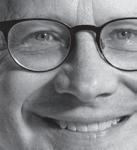
3. Do you have a plan to improve and coordinate services to help people who are homeless?
A mayor, I would bring together the public, private, and nonprofit sectors to fi nd ways to increase services for our unhoused population. We need to increase access to outreach services and support the utilization of a housing first approach.
4. What do you think are the main drivers of homelessness?
Not having housing. Roughly 17 percent of Nashville’s population lives below the poverty line. Nashvillians living check to check are often one or two bad breaks away from homelessness if they don’t have a support system. Gentrification of once-affordable neighborhoods is another concern.
5. Over the past few years, we've seen money/deals given to businesses/developers while the budgets seem to leave very little for teachers, services and affordable housing. Is frustration with that justified?
Yes. The Mayor’s Office’s approach has been to incentivize development and hope that benefits trickle down. Time and time again, Metro has been co-opted in the service of incentives that are often no longer necessary. As mayor, I will rebalance Nashville’s priorities and refocus our budget to find additional funding for education and affordable housing. I want to create a Nashville that works for everyone.
• Increasing our federal Continuum of Care funding by 10 percent.


• Focusing on target populations such as youth and veterans. Last summer, we received $3.54M for youth housing and services. Through the 90 in 90 Veterans Campaign last fall, we identified more than 200 Veterans experiencing homelessness, and we’re housing more veterans each month. We are also building 40 units of Veterans housing at Curb Victory Hall.
2. What's your plan to increase the amount of affordable housing in Nashville?

This spring, I launched the Under One Roof 2029 Initiative, Nashville’s largest-ever plan for affordable housing. Over the next decade, we will invest $500 million in affordable housing and call upon the private sector to contribute another $250 million. Through this initiative, we will build more than 10,000 units of housing that include deeply affordable, work force and market rate housing. That way, we can deconcentrate poverty and help residents take the next step toward a better life. I am also championing the development of 100 units of permanent supportive housing and an accompanying homeless service center.
3. Do you have a plan to improve and coordinate services to help people who are homeless?



I will continue supporting the work of the Metro Homeless Impact Division and the Homelessness Planning Council as they build a stronger system to end homelessness. This summer, the Homelessness Planning Council will release their strategic plan, which I will implement. By expanding the CES, we will continue to better coordinate service providers and nonprofits, and we will keep investing in the Homeless Management Information System (HMIS). We must shift our mindset from not just managing homelessness – but actually ending it.
4. What do you think are the main drivers of homelessness?
Many of our residents are just one crisis away from homelessness. Mental health, substance abuse issues and lack of employment are compounding factors with homelessness, but ultimately the issue is housing. That’s why I’m working to expand “housing first” approaches. Residents need a roof over their head first, and then we can provide the wrap-around services they need.
5. Over the past few years, we've seen money/deals given to businesses/developers while the budgets seem to leave very little for teachers, services and affordable housing. Is frustration with that justified?
TIF is something we have used in the past to incentivize certain development and revitalization projects in the city. While I believe it’s been used wisely to date, moving forward we are going to be more diligent and stricter about doing it. In the two budgets that I’ve presented to Council as Mayor, neither of them included a single dollar for new TIF or other business incentives. A Metro-led committee recommended that we make a clearer set of rules for TIF, and I support that change. Secondly, regardless of past trends, I think I’ve made my commitment to services like education and affordable housing very clear. This year, I allocated more than $1 billion to MNPS — their largest-ever allocation from Metro. I created Under One Roof so that affordable housing will be a budget priority of Metro’s for the next decade.
1. How do you think the city is doing in terms of helping its most vulnerable citizens?
Poorly. City Hall has lost track of the public’s priorities and lost the public’s trust. The primary obligation of city government




1. How do you think the city is doing in terms of helping its most vulnerable citizens?
This is some of the most important work a city does, and we’ve made strides over the last year:
• Creating the Homelessness Planning Council, which will help govern, coordinate and target resources.
• Strengthening coordination of providers through the Coordinated Entry System (CES), which led to a 14 percent reduction in our annual Point in Time Count.



In 1953, during the first freeze of the Cold War, newly elected President Dwight D. Eisenhower took the White House in the midst of chaos. The so-called Red Scare found Wisconsin Senator Joseph McCarthy leading a government purge of supposed communists and soviet sympathizers that famously reached all the way into the entertainment industry, destroying lives with accusations and blacklists along the way. A new public television documentary, spotlights The Lavender Scare – a lesser-known purge of gay employees of the federal government. The Lavender Scare demonstrates how gays were seen as vulnerable to communist blackmail because of their sexual secrecy. The film quotes Joseph McCarthy, “Homosexuals must not be handling top secret materials. The pervert is easy prey for the blackmail.”
It’s ironic that an executive order from President Eisenhower ultimately blackmailed thousands of federal employees into resigning quietly for fear that their sexual orientation might be made public. The Lavender Scare revisits a time during the 1950s when gay men and lesbians sought to blend in and not be visible. Fear of anti-gay laws, homophobic violence, and social alienation all meant that many American men and women found themselves leading double lives.
During the purge American citizens were ex-
posed to targeted legal investigations that peered into every part of a person’s life: a government worker’s fellow employees and supervisors were interviewed; a worker’s minster, priest or rabbi would be contacted; social habits were monitored and connections were made between known homosexuals. By the time F.B.I. agents confronted a suspect they already had extensive insights into
every aspect of a person’s daily habits. Suspects were not allowed to confront the confidential informants who often outed them, and they weren’t allowed any legal representation or due process.
The Lavender Scare’s deep historical documenting is one of its best strengths, and its educational value alone make this an important film to watch in June. The movie retraces the

footsteps of large populations of gay men and lesbians who moved to Washington, DC in the 1930s. Those young men and women sought the 1000s of government jobs created under Franklin Delano Roosevelt’s New Deal. They also sought the sophistication and freedom of an urban lifestyle in the nation’s capital over the provincial backwaters and small-minded hometowns they fled. The Lavender Scare also examines the revolutionary effect World War II had on the lives of gay Americans. The total mobilization of the country pulled thousands of young men and women into the military’s same-sex environments. For many gay American soldiers, sailors, airmen and marines the war was an opportunity to meet like-minded friends and lovers. One former sailor interviewed for the documentary flatly states, “I didn’t know how many people were gay before I joined the Navy.”
Director Josh Howard’s take on David K. Johnson’s book combines found footage and stills with lots of Ken Burns-esque voiceovers to bring public documents, letters, diaries and the people behind them to life. He also uses “Dragnet” style narration and the files, folders, and photos asesthetics of a police procedural to bring a paranoid, crime film tone to the investigation scenes in the movie. The Lavender Scare is narrated by Glenn Close and features voice acting from Cynthia Nixon, Zachary Quinto, TR Knight and David Hyde Pierce.
Howard is an entertaining filmmaker, but the story that’s the real star of The Lavender Scare. If there is any real value to observances like Pride Month it’s that they can focus our attention on people and issues that many of us may only be cursorily connected to in dayto-day lives. For me The Lavender Scare is an invitation to discover a story from a chapter of our country’s recent history that I’ve never known about. It’s a love story and a tragedy, but it’s also a story about workers’ rights and civil rights and the pursuit of happiness. The Lavender Scare is a valuable addition to queer cinema, and its an important American film.
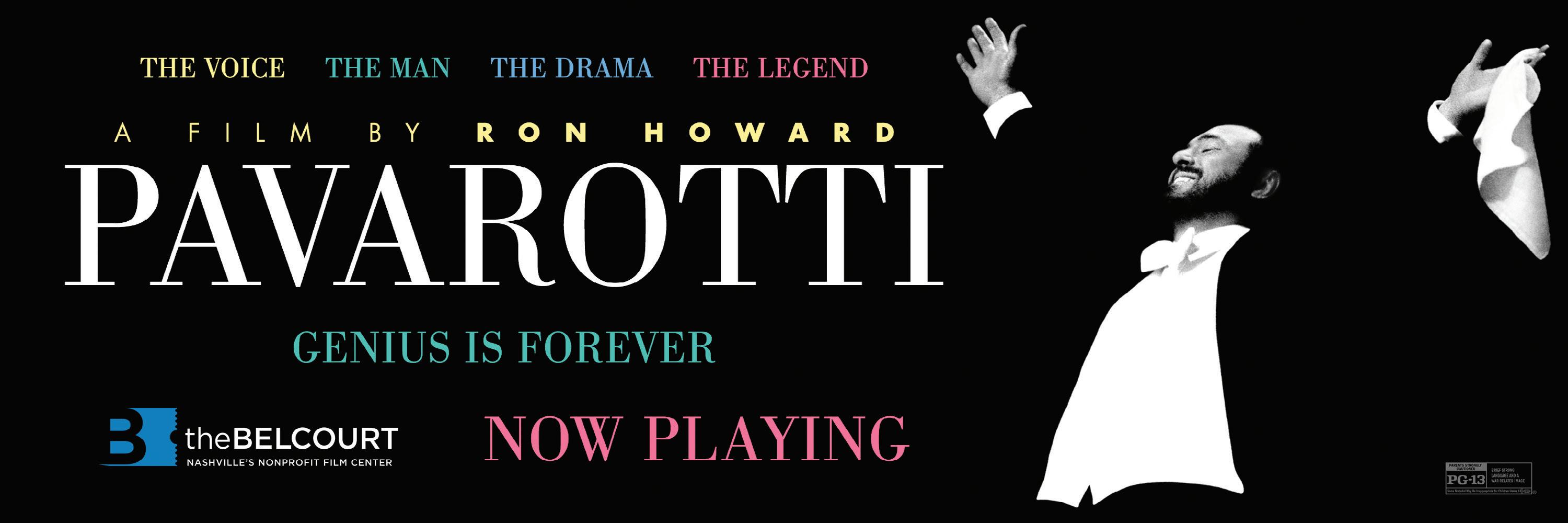
Sometimes it is in the simplicity of life that we can become the most complex. Not because the answer is difficult to understand, but because we choose not to deal with the difficulty of the question. It is easier to fill a conversation with noise than make the decisions that challenge our values. Add in political, cultural, or class polarization and you can have years of meetings, that resemble the old feuds that caused dismay, long past the memory of the offense.
The offense that I refer to is people panhandling on Broadway, partying under the pavilion at Centennial Park, people sleeping in the park while realtors show the new condos nearby. These are an offense to the quality of life of the city, the community, and our neighbor citizens. This offense is real, costly, and we collectively choose to pay that cost.
I then wonder about the offense that has been caused to the panhandler, those gathering under the pavilion, or those people sleeping in the park. When did their community of support break down? When did their reality change? What offenses have they endured? Where is the offense to the rate of gentrification? How did we not hear them when they first cried out?
Is it possible, as a city, to design gatherings to specifically listen to all offended parties?

When we listen, we may hear of young adults that grew up in unstable environments and find the park a safer place to live than their home. People finding family more welcoming in tent
encampments than neighborhoods.
We may hear from young adult entrepreneurs who are investing their dreams and resources through a downtown business that provides for their future family.
We may hear of a senior who moved to the city for cancer treatment and could not afford housing in the city of the hospital that would serve him. A senior inspiring other as he fights for his health and housing.
We may hear of another senior buying a condo in downtown Nashville in order to have quality time with their children and grandchil-
dren. A couple that has always given through their faith community but is challenged by the behavior towards their family on a Saturday afternoon.
We will hear frustration from police officers who recognize that there is sludge in policy and practice when confronted daily by our neighbor citizens with different histories and hopes.
Can you hear it? I can and have for more than twenty years. This feud that polarizes neighbors in a conclusion of differences instead of the unity of a community. If we are going to feud, let us feud together. It is better than simply adding

to the noise.
The simple solution is to see and hear each other so that together we might design our quality of life. The solution is simple. The work is hard. But, Tennesseans are rightfully known for working hard.
Might we consider a "Quality of Life District" that purposefully brings forth citizens, public service workers, and policymakers through creative conflict? Might we share our journey with one another? Might we acknowledge our individual and community quality of life goals? Might we respect each other’s humanity?
I am offended. I trust you are.
Might we join together in this Fight for Good?
Give me a call (615-933-9305). Let us enjoy the simple solution of listening to each other over a cup of coffee.
Major Ethan Frizzell serves as the Area Commander of The Salvation Army. The Salvation Army has been serving in Middle TN since 1890. A graduate of Harvard Kennedy School, his focus is the syzygy of the community culture, the systems of service, and the lived experience of our neighbors. He uses creative abrasion to rub people just the wrong way so that an offense may cause interaction and then together we can create behaviorally designed solutions to nudge progress. Simply, negotiating the future for progress that he defines as Quality of Life in Jesus!
HAROLD B.
The weather’s fine Got to sleep late Enjoying the sunshine
Nothing much happening Wondering about the crew Somebody close to me Like me and you
JACKIE S.
The big yellow “C” is essentially the Scarlet Letter of homelessness.
The longer you wear it, The more the stigma is prevalent, And you can just stay idle for decades, Or be driven to get back to the other side Of the fence… … though always remembering to Take the road less traveled.


DAVID F.
Time’s comes and time’s goes When will we leave no one knows God has bless me n gave me life Get away from me or become my wife
I try 2 B good N do the best I can Damn sweetheart I’m only a man If I hurt u my love I mean no harm Living in the city I grew up on a farm
If we don’t live Right N Hell we will be This world is going 2 end can’t u see I got 2 get off of this ungodly line Jesus got crowns N I want mine
My crown I pray 4 day N night I only have so much time 2 make it right I’m Tony First N I’m 1 of a kind Please pray with me 4 we’re out of time

 BY
BY



One Sunday in May I decided to go downtown and ride the bus around. A Sunday drive, as most folks would say. Once I was downtown I got on bus 56 BRT limited stops headed towards Rivergate. I wasn’t really going anywhere particular, just enjoying the day.
As the bus was traveling down Gallatin Road making its stops, one particular situation caught my eye. The bus stopped at Neelys Bend at the Walgreens on Gallatin Road. A couple got on the bus with a little boy. Behind them, I noticed there was a young man struggling with a wheelchair. The crazy thing about it though, is that it wasn’t even really a wheelchair, it was a Geri Chair. You see, Geri Chairs are used in nursing homes to transport patients in and out of bed, and are especially not made to transport long distance! These chairs only have four small wheels. They don’t even have the two big wheels like a regular wheelchair.
The young man was pulling her up a grassy hill toward the bus. He should have been pushing her up the hill instead. So when I saw that he was having trouble getting her up the hill I got up and headed off the bus to assist him. He lost his grip on the chair and not only was it going down the hill so was the lady! YAP! She then started sliding out of the chair. By this time the bus driver noticed what
was happening. He jumped off the bus to assist as well. By the time the driver got off the bus, the lady had already slid out of her chair and was rolling down the hill, which wasn’t good at all. At the bottom of the hill was asphalt. I was so afraid she was going to hit the asphalt and really get hurt.
The man who had got on the bus before I saw this whole thing also got up to help the woman. Come to find out, he was her son-in-law. The whole time he was out there helping he was fussing and raising Cain, which I thought was uncalled for. He was yelling at her and telling her to stop stiffening up because she was “dead weight.” I just can’t believe the lady that got on the bus with him was letting him talk to her mother like that. If that had been my mom he would not have talked to her like that I assure you.
The bus driver had got the Geri Chair and was holding it at the bottom of the hill, and the young man and the other dude got her up in the chair. The driver and myself was just shaking our heads like man we can’t believe this is happening. Before I got back on the bus I told the guys that they need to push her around the grass and keep her on asphalt so it wouldn’t happen again. Once she was on the bus the driver strapped
I want to thank Keith Urban for coming on our paper for last week’s cover story and being so real on the things that you said and for buying and reading The Contributor. I hope people take something away from it, and see that a person of your stature can be honest and say what you feel about our paper. We know we are doing something right. When I read what you said I cried. And I want to thank you personally. So, thank you
for your honesty about our paper. People are going to be mad about what I say and what I write because I write the truth. And people don’t like to hear the truth. And even landlords don’t like to hear the truth about what they’re doing wrong. And the things that they know that they’re doing is illegal and now people of Nashville know the illegal things that this landlord is doing because of what I’ve written. They can’t keep it a secret anymore.
her in and we were once again on our way.
I turned and asked her daughter why she was in a Geri Chair instead of a regular wheelchair. She told me it hadn't been five years since she got her last one. Bull crap, I thought to myself. If she got insurance and the doctor wrote a script for it she could get one. I told her, “Sweetie that chair you got her in is very dangerous. It's not made push her around in like you are doing. And if her insurance won’t pay for one she can go to Goodwill they usually have some there really cheap.”
I was sitting behind the lady and kept asking her if she was all right. “Sweetie are you hurt anywhere?” She would only nod her head. I’m not even sure if she could talk. Hell, she may have been to scared to talk, thinking she might get in trouble if she did. I was just trying to make sure she was all right. Her daughter should of been asking her the things I was asking her. Best believe if it was my mom, I would. If you ask me, and I hate to say this, but I believe they couldn't care less about the lady. It was the first of the month, so you can assume she had her check and by the looks of it they were all off to spend her money.
The more I talked to them the angrier I got. The young man who was pushing the chair was the only one that seemed to care for the
woman. As the bus was moving her chair was moving a little as well and the young man and I were holding the chair to keep it from moving and keeping her from sliding out again. Plus, he kept saying, “Momma you all right?”
My stop was coming up so I walked towards the driver and asked him his name. He replied, “O.” I said, “O, man you are an awesome bus driver for what you done back there! ’Cause I know y'all are not supposed to do what you done back there. Y'all are only to strap them in once they get on the bus.” Most drivers would have let them do it on their own or driven off because if they can’t get on the bus without assistance they are supposed to get on the access bus.
With all this being said, I pray that the little lady is OK. And, “O” YOU ARE AWESOME! Keep doing what you are doing. If the world had more caring people like you it would be a safer and happier place today. MTA should be grateful to have a great bus driver like you. On Mondays anytime after 1 p.m. you can catch Mr. O out there in Bellevue. You’ll know it’s him by looking for that warm and smiling face with a little silver in it. Once again, “O’’ you are an AWESOME YOUNG MAN. LOVE YOU
TO PIECES DUDE!When I was 17 I started singing and playing music at the old hobby shop across from the old juvenile hall real close to the Howard School where I was going at the time. I was the lead singer of course—Ha! I’m a bragger. We called ourselves William and the Hurricanes. At that time, I could sing with music, but now I sing better acapella. I’m not bragging (this time!), it’s just that I feel the music and my song better if I sing acapella than I do if I sing it with music. Some I can, some I can't. But when I was in my band, I was still doing the burglary thing and that caused me a lot of trouble and it made me lose contact with some of my band members. One of my band members is a country singer named John Wesley Rouse III. I am really trying to
get in touch with him. If you know him, or if you can get in touch with him please ask him to email editorial@thecontributor.org. This is something that I really want to do is get in touch with some of my old music friends. I know some of them are already dead. My drummer went to the Army back in the '70s or '80s (I’m not sure which it was) and he got killed. His nickname was bomber and he was a good drummer. Then there was Jerry Moran and there was Bobby Kelly. Bobby Kelly was my backup singer and lead guitarist. The rhythm guitar player was John Wesley Rouse III. If you know him or can get in touch with him, please get in touch with The Contributor. Thank you and have a blessed year and a blessed life.

So my 10-year class reunion was not what I expected. I thought it would be like old times, catching up with friends. Instead it was all new times. Getting to know all the people I never even talked to back in my school days. And I think maybe that was better. Because we aren’t so different as I thought we were back then. We’re all different but we’re all trying. Pretty much everybody’s trying, Gemini.
They say if you can’t stand the heat you should get out of the proverbial kitchen. But I say you can stop running from the open oven doors in your life, Cancer. If you can’t stand the heat, just wait a while. The heat will pass. Th is current wave is making you stronger and wiser. When the cool comes you’ll appreciate it all the more.

I’ve been hearing a lot lately about people suffering from FOMO. I assumed it was some new mosquito-borne parasite or maybe a bladder condition, but it’s something far more sinister. FOMO is what the kids are calling “fear of missing out.” It’s spread through social networking and texts. Fortunately there is a cure. If you want to avoid FOMO, just always be doing exactly the thing you want to be doing. You’ll never miss out again.

I got an invite to the 10-year class reunion for the Raging Oaks Amateur Astrology Institute. I can’t believe it’s been 10 years! I guess time fl ies when you’re living your dreams. Apparently, time also fl ies when you’re desperately floundering, looking for meaningful work, and barely using your degree. I wonder, Virgo, where I’ll be 10 years from now. Where will you be? What can you do today to get you where you want to be then?

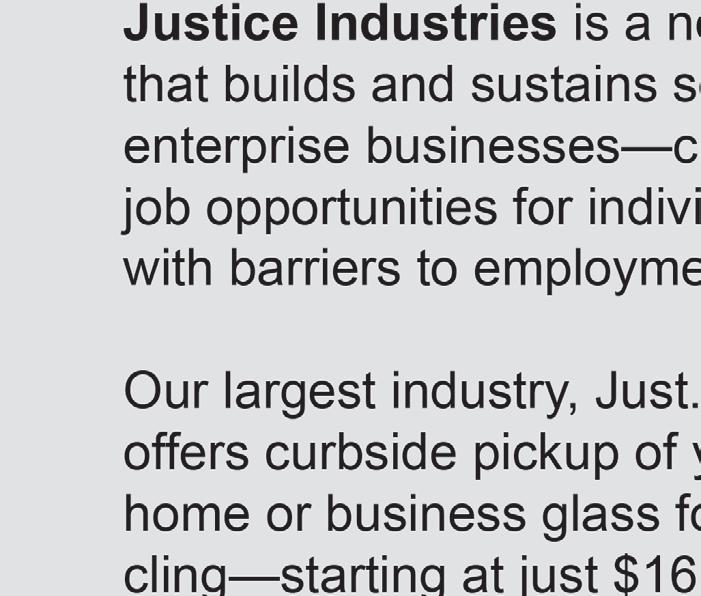



Have you seen those kits where you can power a clock using a potato? I think it has something to do with the reactions between zinc, copper, and potato juice. Somehow it generates enough electricity to power a tiny clock. The point is, Libra, that I know you’ve felt a little low on juice lately. I think you may need a new power source. Don’t just get a bigger potato. Go straight to the wall socket.
Spring allergies get all the attention. All those pretty spring flowers puffi ng out bright pollen that coats my car and windowsills. But springtime never hits me as hard as the early summer. I start wheezing and sneezing and my eyes swell shut. My allergist says it’s mold and ragweed. Sometimes a thing may hit you a little harder than it hits everybody else, Scorpio. You can’t go around acting unfazed just because everybody else is.
I can’t decide weather or not to go to my 10year reunion. What if nobody remembers me? Worse yet, what if they do? I was hardly top of my class at the Raging Oaks Amateur Astrology Institute. Still, I don’t know if I want anybody to know what I became. But how can we ever become something new, Sagittarius, if we can’t even tell people who we are today. Don’t hide the truth of your life. It’s the only way forward.
The word “ersatz” comes from the German verb “ersetzen” meaning “to replace or substitute.” In current usage, the implication is that an ersatz item or experience is not as good as the original. But I want you to question the idea that the thing that came first is best. Maybe this week the replacement is actually exactly the thing you’re looking for.
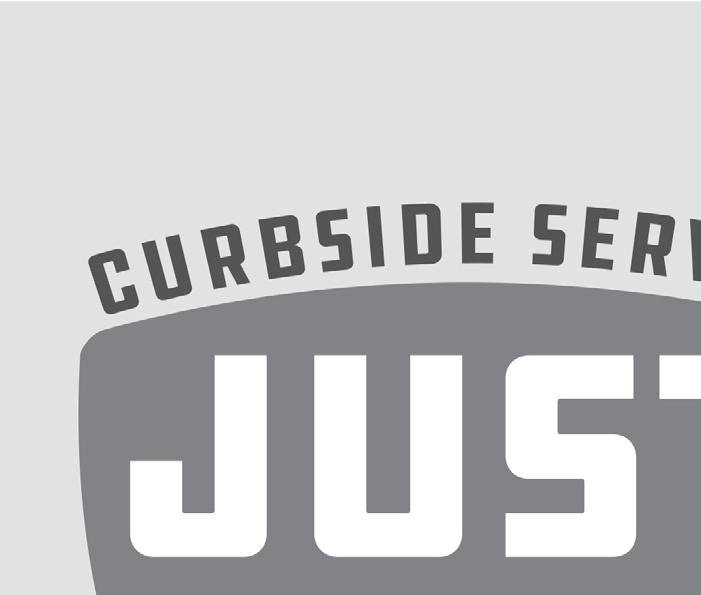
As I look ahead to the future, my calendar app tells me that in some traditions there’s a week that marks The Feast of the Assumption. I assume this has something to do with feasting and … assumption. I guess I could look it up. But it’s a good opportunity to realize how easy it is to make assumptions about other people’s beliefs and daily lives. Try to back off on the assuming this week, Aquarius. Instead, try asking questions. I’ve got some googling to do.
So I bit the bullet and showed up for the 10year class reunion of The Raging Oaks Amateur Astrology Institute. And I hardly recognize anybody. I’ve had the same conversation about 12 times. “Where do you live?” “What do you do for work?” and then just awkward staring at the buffet. Maybe I need tools for better small talk. Th is week, Pisces, skip the basic questions and go for the hard-hitters. We’ll never know each other if we never ask.
In the 1986 comedy fi lm Short Circuit, a military robot is struck by lightning and becomes sentient. Th is kind of thing happened all the time in the ’80s. The streets were practically swarming with bulky, wisecracking, inappropriately-curious robots. It seems like you could use a lightning strike this week, Aries. Something to make you come alive again. But you’ll never get hit by a bolt if you don’t go out rolling in the storms.
I have a lot of respect for Smokey the Bear. I think he’s done some good work. But what if you truly lived his mantra that “only you can prevent forest fires?” Only you, Taurus. Not me. Not Gemini. Not even some other Taurus. Just you. Well, if you really believed that, you’d either wear yourself out trying to prevent them all or you’d give up in despair. The good news this week, Taurus, is that you’ve got backup.















Sitting in the parking lot next to an apartment complex I really didn’t expect to meet anyone new to homelessness, and yet I did. They were an elderly couple sitting by the curb with with enough nice furniture to fill a house — not something I’d throw away and yet it was by the curb.
Now that only means one thing: They’d been evicted. When someone goes through the court system and gets evicted by the courts, often you only get 10 days to vacate, and the clock starts ticking from the time you leave court. Weekends count.
I understand it’s business and not personal, but what I haven’t figured out is why so quick to evict? Wouldn’t it be easier to work with tenants? The time and money it takes to approve another tenant could be saved by working with a tenant.
I wanted to go up and talk to the couple, but I just wasn’t sure. What help could I be? I had no extra money or really anything to give them, but I had to do
something so I walked over and started talking to them and listening to their story.
Irene* is 72 and a retired secretary. Her husband Max* is 68 and a retired salesman for a major company. They both get a small pension and Social Security. They’ve been married for 53 years and say they are even more in love today than when they got married.
Several years ago, Irene was diagnosed with cancer and went through a successful surgery to remove it. Her doctor wanted to make sure it wouldn’t return so they ordered six weeks of chemotherapy. Irene and Max couldn’t afford the treatments on their Social Security and retirement so Max got a part time job at a grocery store to make more money.

Within a few months he made enough for them to start the treatments. Irene is cancer free today, but at a very high price. Max then got sick and was out of work for five weeks. They started struggling to make
the home equity payments, and the bank foreclosed on their home — the only home they’d know in their 52 years of marriage.
They found an apartment in Hermitage for $700 a month and moved. Max and Irene never had children so there was no family for them to fall back on. Each year they lived in this apartment, the rent would increase with each new lease signed, stating fair market value. Four months ago it increased to $1,000 a month. Not knowing what else to do they signed the lease.
Eviction came a few months after signing the new lease, creating even more debt for the elderly couple. Discounts and fees were added on with no hope of being able to pay, and they never fought the eviction. “I just didn’t know what to do. I’d never known anyone in this situation,” Irene said. “I didn’t know what to do, who to call or where to go.”
I asked her and Max if anyone was there with them at court giving assistance in
housing. They both looked at each other and then said, “Was there supposed to be?”
Why wasn’t there anyone there offering assistance? The nonprofit outreach agencies should have been there. They should be at every eviction hearing to offer help to those being evicted. They call them outreach workers, but sometimes it seems like there isn’t much outreach going on, but rather, “if you know about us you can call us for assistance.” Time is of the essence when you’re losing your residence, it seems like at the very least Max and Irene should have been given information on who might be able to help.
Thankfully, some really great people came to Max and Irene’s aid and they now have a place that’s affordable, fully furnished and are all settled in. This could have ended up very differently and I’m so thankful that it didn’t.
John Cooper has a record of standing for everyone...
• On Transit. Cooper was the only county-wide elected official to actively oppose a transit plan that did not equitably serve all neighborhoods.
• On Ft. Negley. Cooper stood strong against the city’s proposed giveaway of public park land to private developers. I will have a real 10 year affordable housing plan.





• O
John Cooper is the right Mayor for the right time.


www.JohnCooperForNashville.com
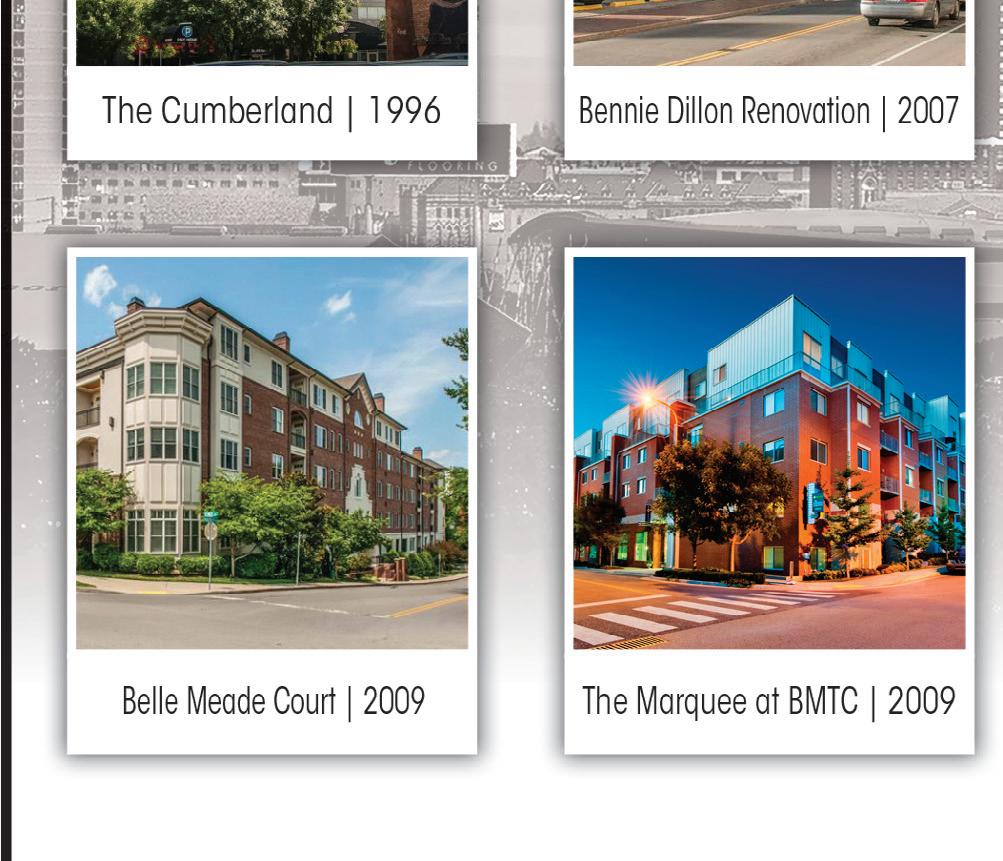
LET’S CREATE A CITY THAT WORKS FOR EVERYONE.PAID FOR BY JOHN COOPER FOR NASHVILLE • MARY FALLS, TREASURER
